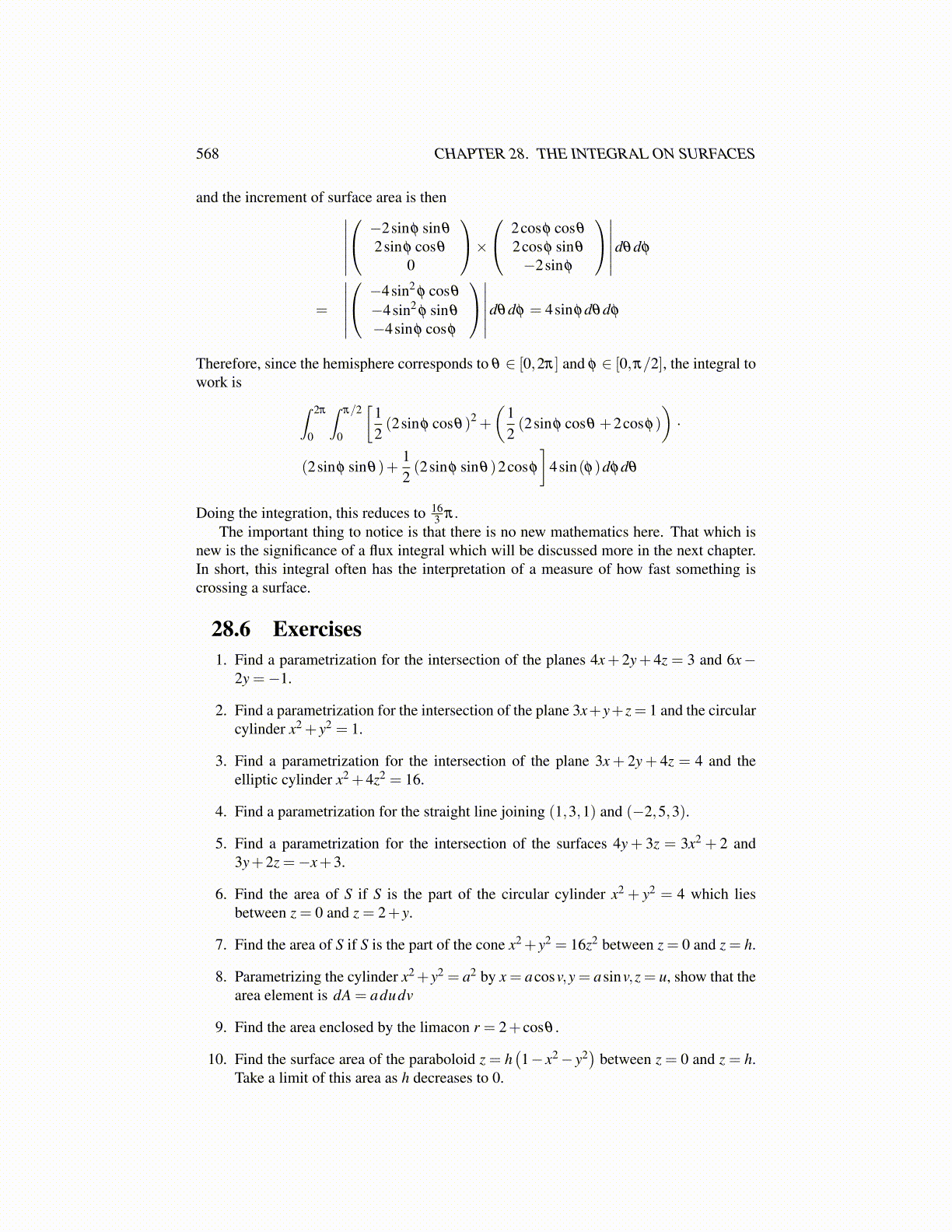
568 CHAPTER 29. CALCULUS OF VECTOR FIELDS
definition in terms of coordinates. Be sure you understand that for f a vector field, divfis a scalar field meaning it is a scalar valued function of three variables. For a scalar fieldf , ∇ f is a vector field described earlier. For f a vector field having values in R3,curlf isanother vector field.
Example 29.1.2 Let f (x) = xyi+(z− y)j+(sin(x)+ z)k. Find divf and curlf .
First the divergence of f is
∂ (xy)∂x
+∂ (z− y)
∂y+
∂ (sin(x)+ z)∂ z
= y+(−1)+1 = y.
Now curlf is obtained by evaluating∣∣∣∣∣∣i j k∂
∂x∂
∂y∂
∂ zxy z− y sin(x)+ z
∣∣∣∣∣∣=i
(∂
∂y(sin(x)+ z)− ∂
∂ z(z− y)
)−j
(∂
∂x(sin(x)+ z)− ∂
∂ z(xy)
)+
k
(∂
∂x(z− y)− ∂
∂y(xy)
)=−i− cos(x)j− xk.
29.1.1 Vector Identities
There are many interesting identities which relate the gradient, divergence and curl.
Theorem 29.1.3 Assuming f,g are a C2 vector fields whenever necessary, the fol-lowing identities are valid.
1. ∇ · (∇×f) = 0
2. ∇×∇φ = 0
3. ∇× (∇×f) = ∇(∇ ·f)−∇2f where ∇
2f is a vector field whose ith component is∇
2 fi.
4. ∇ · (f ×g) = g·(∇×f)−f ·(∇×g)
5. ∇× (f ×g) = (∇ ·g)f− (∇ ·f)g+ (g·∇)f− (f ·∇)g
Proof: These are all easy to establish if you use the repeated index summation conven-tion and the reduction identities.
∇ · (∇×f) = ∂i (∇×f)i = ∂i(ε i jk∂ j fk
)= ε i jk∂i (∂ j fk)
= ε jik∂ j (∂i fk) =−ε i jk∂ j (∂i fk) =−ε i jk∂i (∂ j fk)
= −∇ · (∇×f) .